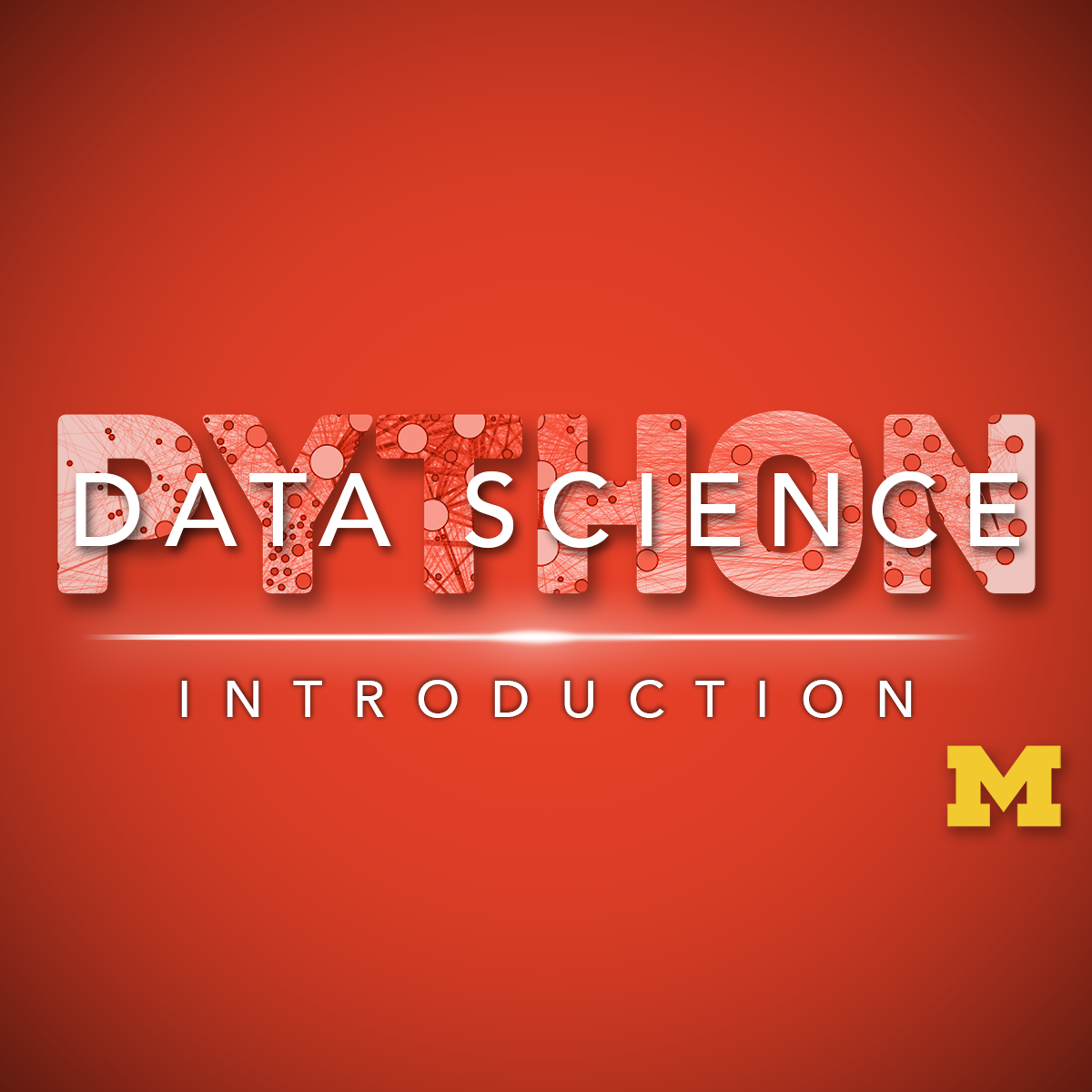Back to Courses









Data Science Courses - Page 32
Showing results 311-320 of 1407

The Importance of Listening
In this second MOOC in the Social Marketing Specialization - "The Importance of Listening" - you will go deep into the Big Data of social and gain a more complete picture of what can be learned from interactions on social sites. You will be amazed at just how much information can be extracted from a single post, picture, or video. In this MOOC, guest speakers from Social Gist, BroadReader, Lexalytics, Semantria, Radian6, and IBM's Bluemix and Social Media Analytics Tools (SMA) will join Professor Hlavac to take you through the full range of analytics tools and options available to you and how to get the most from them. The best part, most of them will be available to you through the MOOC for free! Those purchasing the MOOC will receive special tools, templates, and videos to enhance your learning experience. In completing this course you will develop a fuller understanding of the data and will be able to increase the effectiveness of your content strategy by making better decisions and spotting crises before they happen! MOOC 2 bonus content in the paid toolkit includes access to Semantria's analytics engine to extract some data on the markets you are developing and have it analyzed.
As a student in this course, you are being provided the opportunity to access IBM Bluemix® platform-as-a-service trial for up to six months at no-charge with no credit card (up to a $1500 value).
NOTE: By enrolling in this course, given access to IBM's Bluemix technology for one month for free as well as Lexalytics' Semantria tool. For those earning a Course Certificate, you will be given an additional five months of Bluemix and three months of Semantria at no cost with a special key code. By enrolling for a Course Certificate for this MOOC, you are acknowledging that your email will be shared with Lexalytics for the sole and express purpose of generating your individual key code. After the key code has been generated, Lexalytics will delete your email from its records.
Additional MOOC 2 faculty include:
* Steve Dodd (SVP Business Development, Effyis - dba BoardReader and Socialgist - Global Social Media Content Access)
* Seth Redmore (CMO, Lexalytics, Inc.)
* Chris Gruber (Social Media Analytics Solution Architect, IBM)
* Russell Beardall (Cloud Architect, IBM)
* Tom Collinger (Executive Director Spiegel Research Center and Senior Director Distance Learning, Medill Integrated Marketing Communications, Northwestern)
* Tressie Lieberman (VP Digital Innovation, Taco Bell)

Creating an Interactive KPI Management Dashboard in Tableau
In less than one hour, you will learn how to connect to data, create key performance indicators, create sparkline charts, create a dashboard map, create dual axis charts and put it all together in a well-formatted and interactive dashboard.
Note: This course works best for learners who are based in the North America region. We’re currently working on providing the same experience in other regions.

Data Science Fundamentals for Data Analysts
In this course we're going to guide you through the fundamental building blocks of data science, one of the fastest-growing fields in the world!
With the help of our industry-leading data scientists, we’ve designed this course to build ready-to-apply data science skills in just 15 hours of learning. First, we’ll give you a quick introduction to data science - what it is and how it is used to solve real-world problems. For the rest of the course, we'll teach you the skills you need to apply foundational data science concepts and techniques to solve these real-world problems.
By the end of this course, you'll be able to leverage your existing data analysis skills to design, execute, assess, and communicate the results of your very own data science projects.

Predict Taxi Fare with a BigQuery ML Forecasting Model
This is a self-paced lab that takes place in the Google Cloud console. In this lab, you will explore millions of New York City yellow taxi cab trips available in a BigQuery Public Dataset, create an ML model inside of BigQuery to predict the fare, and evaluate the performance of your model to make predictions.

Tracking Cryptocurrency Exchange Trades with Google Cloud Platform in Real-Time
This is a self-paced lab that takes place in the Google Cloud console. In this lab you will use GCP services to help graph trades, volume, and time delta from trade execution to see any patterns in the high volatility of the cryptocurrency market.

Quantitative Text Analysis and Textual Similarity in R
By the end of this project, you will learn about the concept of document similarity in textual analysis in R. You will know how to load and pre-process a data set of text documents by converting the data set into a corpus and document feature matrix. You will know how to calculate the cosine similarity between documents and explore and plot the output of your calculation.

Introduction to Data Science in Python
This course will introduce the learner to the basics of the python programming environment, including fundamental python programming techniques such as lambdas, reading and manipulating csv files, and the numpy library. The course will introduce data manipulation and cleaning techniques using the popular python pandas data science library and introduce the abstraction of the Series and DataFrame as the central data structures for data analysis, along with tutorials on how to use functions such as groupby, merge, and pivot tables effectively. By the end of this course, students will be able to take tabular data, clean it, manipulate it, and run basic inferential statistical analyses.
This course should be taken before any of the other Applied Data Science with Python courses: Applied Plotting, Charting & Data Representation in Python, Applied Machine Learning in Python, Applied Text Mining in Python, Applied Social Network Analysis in Python.

Introduction to Recommender Systems: Non-Personalized and Content-Based
This course, which is designed to serve as the first course in the Recommender Systems specialization, introduces the concept of recommender systems, reviews several examples in detail, and leads you through non-personalized recommendation using summary statistics and product associations, basic stereotype-based or demographic recommendations, and content-based filtering recommendations.
After completing this course, you will be able to compute a variety of recommendations from datasets using basic spreadsheet tools, and if you complete the honors track you will also have programmed these recommendations using the open source LensKit recommender toolkit.
In addition to detailed lectures and interactive exercises, this course features interviews with several leaders in research and practice on advanced topics and current directions in recommender systems.

Data Mining Methods
This course covers the core techniques used in data mining, including frequent pattern analysis, classification, clustering, outlier analysis, as well as mining complex data and research frontiers in the data mining field.
Data Mining Methods can be taken for academic credit as part of CU Boulder’s Master of Science in Data Science (MS-DS) degree offered on the Coursera platform. The MS-DS is an interdisciplinary degree that brings together faculty from CU Boulder’s departments of Applied Mathematics, Computer Science, Information Science, and others. With performance-based admissions and no application process, the MS-DS is ideal for individuals with a broad range of undergraduate education and/or professional experience in computer science, information science, mathematics, and statistics. Learn more about the MS-DS program at https://www.coursera.org/degrees/master-of-science-data-science-boulder.
Course logo image courtesy of Lachlan Cormie, available here on Unsplash: https://unsplash.com/photos/jbJp18srifE

Using Machine Learning in Trading and Finance
This course provides the foundation for developing advanced trading strategies using machine learning techniques. In this course, you’ll review the key components that are common to every trading strategy, no matter how complex. You’ll be introduced to multiple trading strategies including quantitative trading, pairs trading, and momentum trading. By the end of the course, you will be able to design basic quantitative trading strategies, build machine learning models using Keras and TensorFlow, build a pair trading strategy prediction model and back test it, and build a momentum-based trading model and back test it.
To be successful in this course, you should have advanced competency in Python programming and familiarity with pertinent libraries for machine learning, such as Scikit-Learn, StatsModels, and Pandas. Experience with SQL is recommended. You should have a background in statistics (expected values and standard deviation, Gaussian distributions, higher moments, probability, linear regressions) and foundational knowledge of financial markets (equities, bonds, derivatives, market structure, hedging).
Popular Internships and Jobs by Categories
Find Jobs & Internships
Browse
© 2024 BoostGrad | All rights reserved